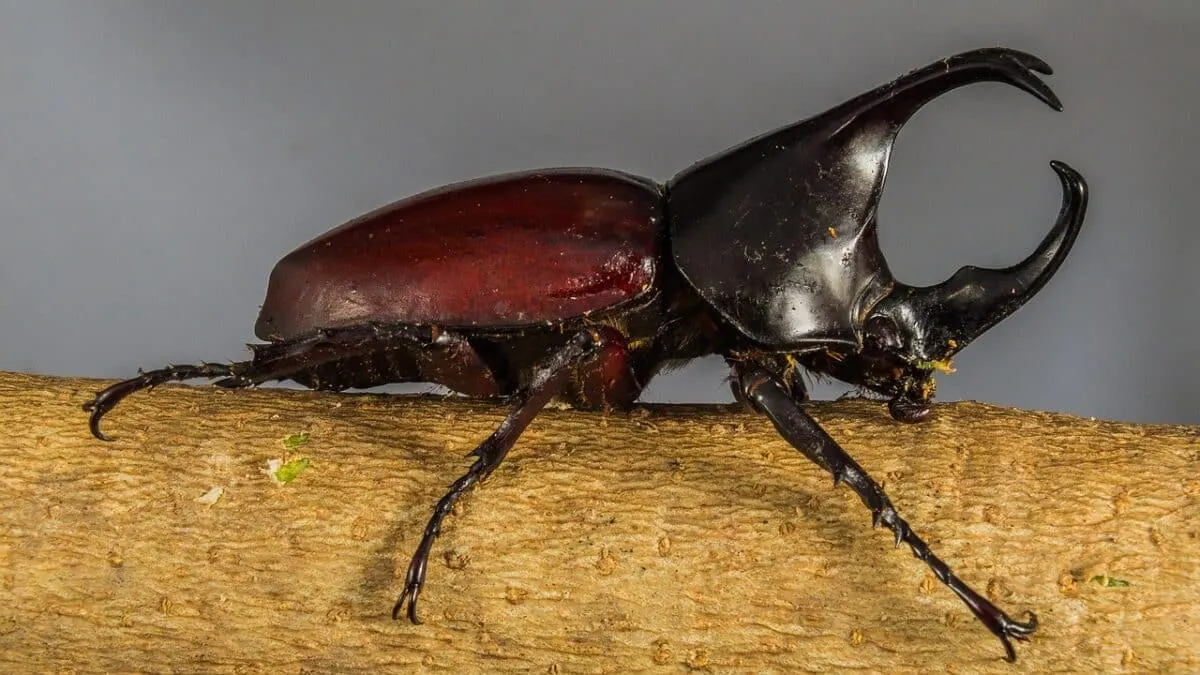The Hercules Beetles, also known as Dynastes Hercules, is not only the largest beetle on the planet – but also one of the most unique. Their impressive size, striking colors, and formidable horns make them a sight to behold, and their behavior is just as fascinating.
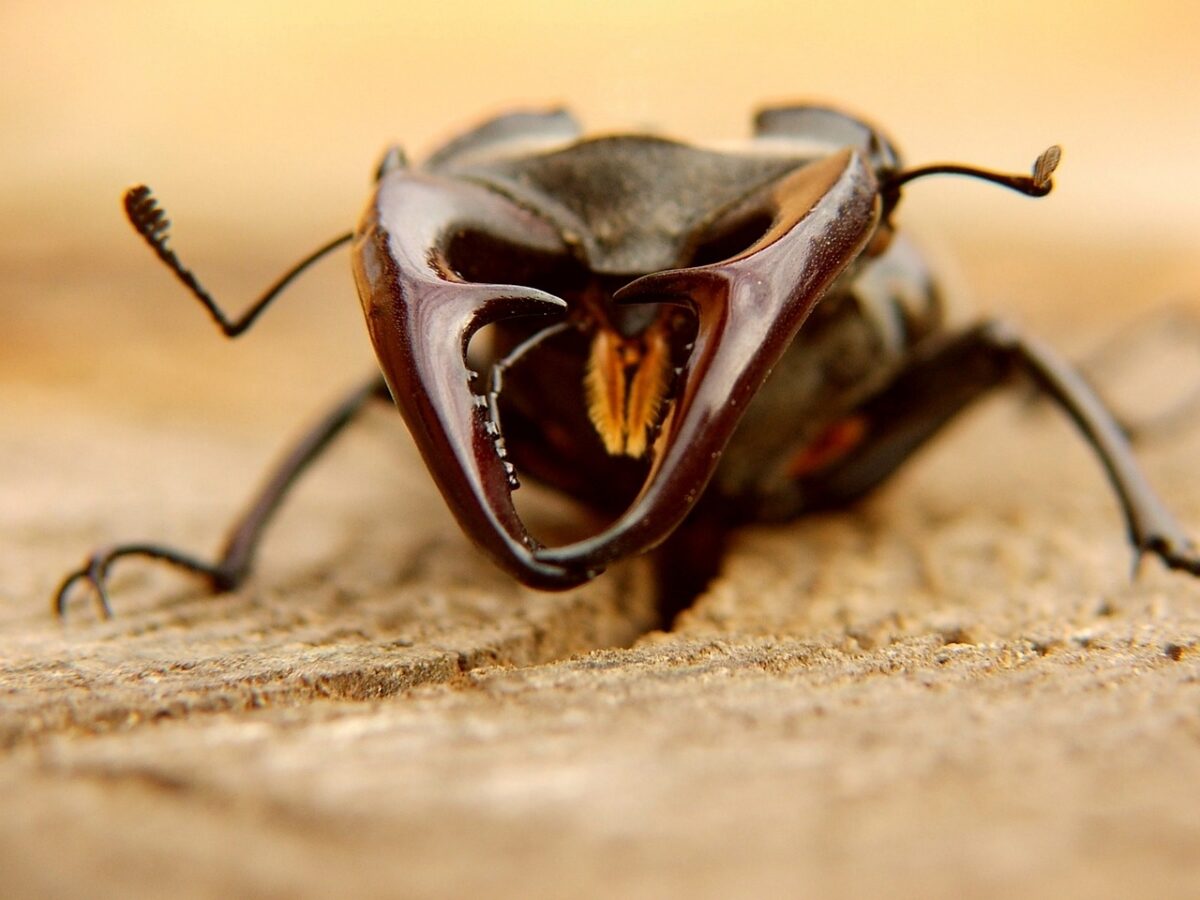
These beetles have a complex life cycle, starting as tiny eggs and progressing through multiple stages before reaching their final form as magnificent adults.
In this guideline, we will delve into the world of Hercules Beetles and explore their ecology, behavior, and unique characteristics. Whether a seasoned insect collector or just curious about these remarkable creatures, read on to discover more about the amazing Hercules Beetle.
What Is a Hercules Beetle?
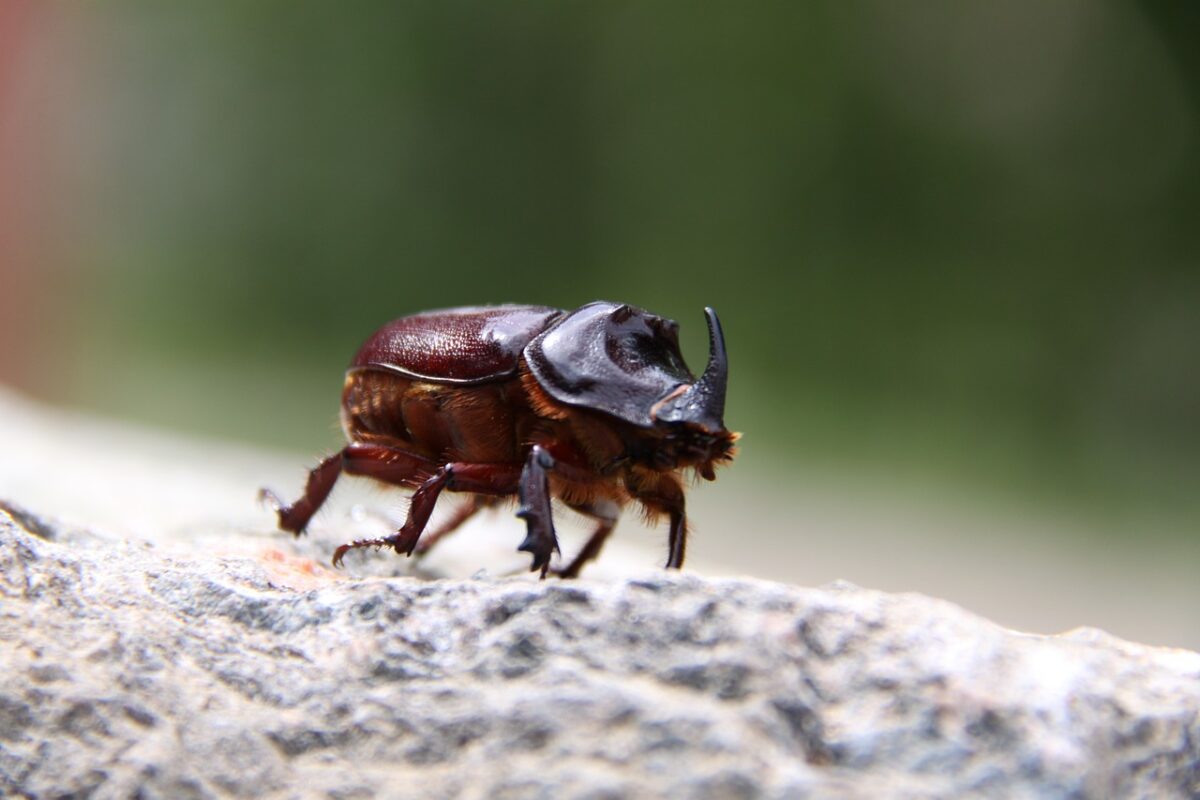
The Hercules Beetle is a remarkable insect found in Central and South America. This beetle is the largest species in its family, known as Rhinoceros beetles. This guideline will delve into the various aspects that make the Hercules Beetle an awe-inspiring creature.
Physical Features of the Hercules Beetle
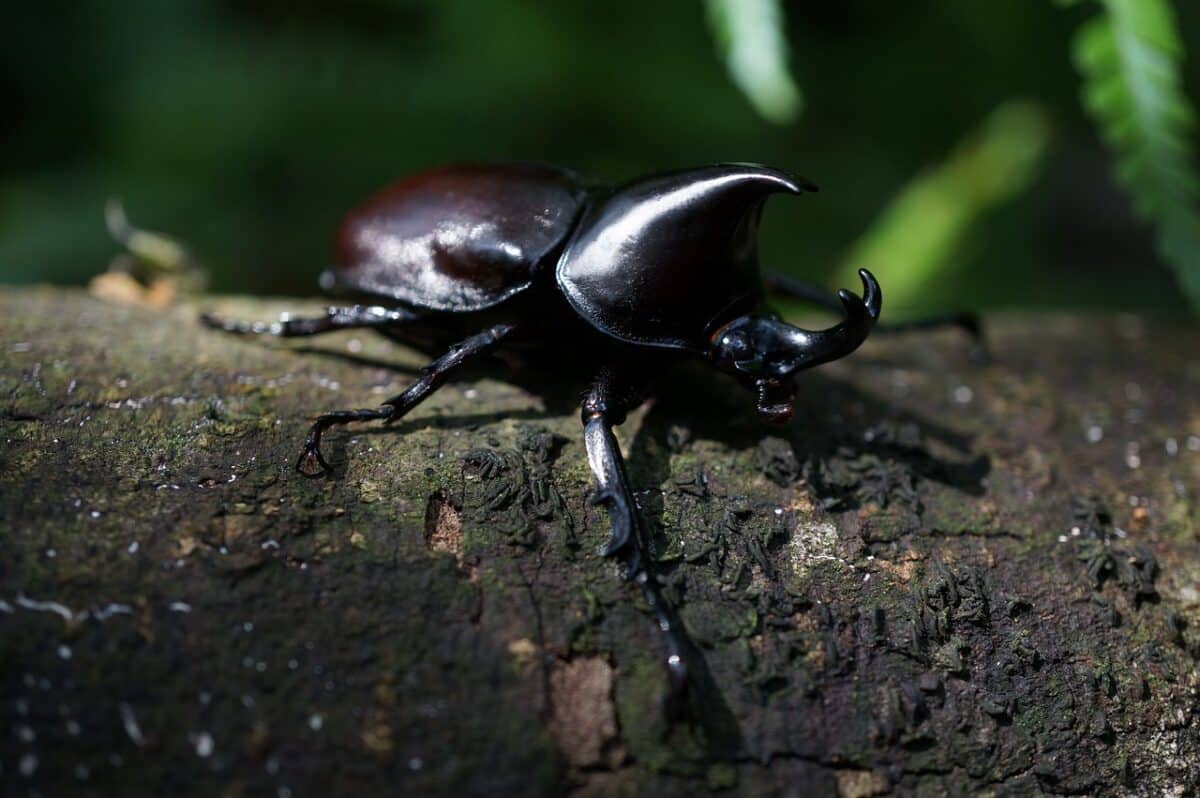
The Hercules Beetle is a rhinoceros beetle species that can grow up to 1.75 – 2.5 inches, easily granting them the title of one of the largest beetles on the planet. These fascinating insects are primarily found in Latin America. They are distinguished by their horns, which are used to push away rivals and competitors during mating season.
- They can range in color from browns to greens, but they all share the same unmistakable physical features that make them stand out.
- The male Hercules Beetle has two horns: the much larger thoracic horn starts at its head and curves forward, whereas the second is smaller and points backward from its thorax.
- The female has no visible horns or antennae, but her carapace is larger than the male’s and extends towards her head for better protection against predators.
Size and Appearance
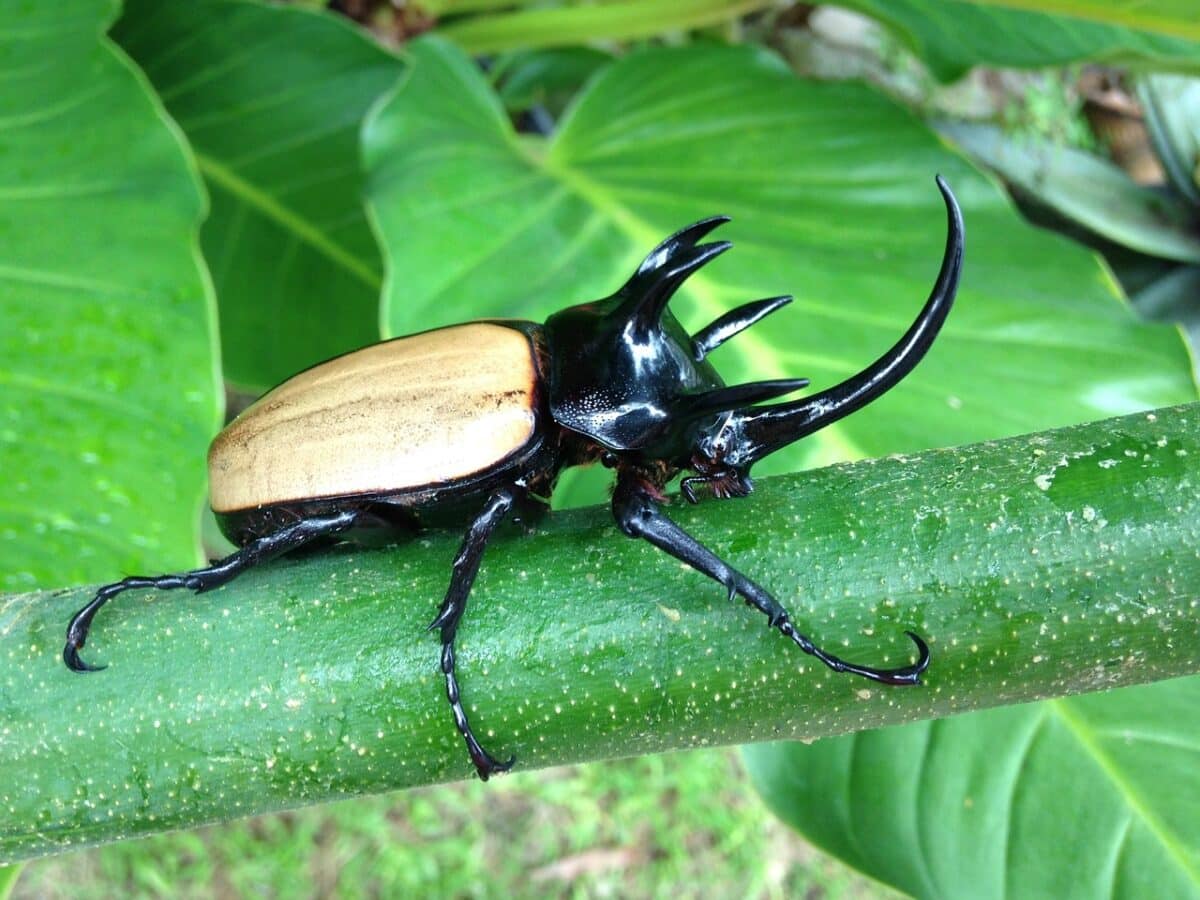
They are known for their impressive size and unique appearance. Its horn protrudes from its head and can be up to one-third of its overall body length. The Hercules Beetle is an imposing figure with a length of around 2.5 inches and a weight of over 2.2 ounces when fully developed. Its exoskeleton is covered with small craters that resemble miniature volcanoes.
Abilities
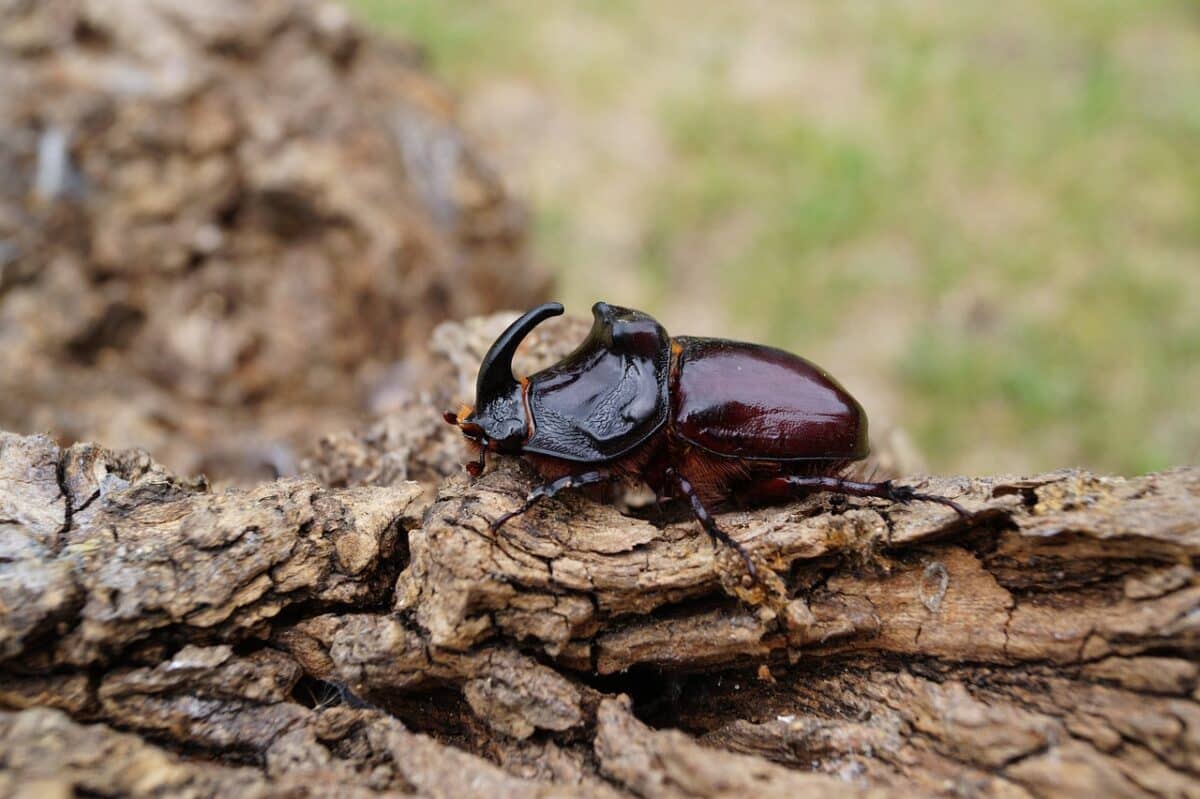
The Hercules Beetle has various abilities that make it a fascinating creature. Its mighty wings allow it to fly up to 200 feet – an incredible feat for such a giant insect. This beetle is also known for its strength, as it can carry objects weighing 850 times its body weight.
Hercules Beetles are impressive insects that capture the imagination with their unique appearance and abilities. Its large size, distinctive shape, and beautiful colors make it an iconic species in the Rhinoceros beetle family. Its impressive skills, including mighty wings and superhuman strength, make it a creature to be admired and respected.
Where Does the Hercules Beetle Live
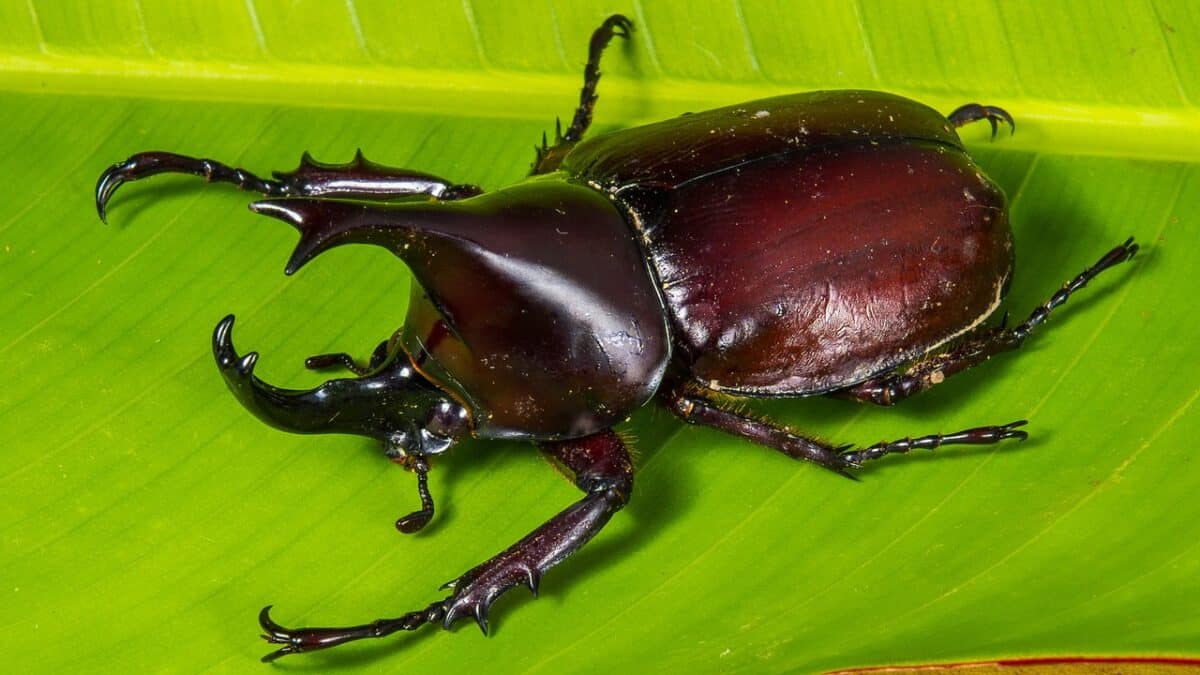
The Hercules Beetle lives in tropical rainforests in Central and South America. It is often found in the upper regions of trees sheltered by thick foliage. Its large size, ranging from 1 to 2.7 inches, makes it fairly easy to find, especially during its activity periods, usually occurring at night.
It’s a species of scarab beetle known for its impressive horns and flight capabilities. The latter allows it to soar through the rafters of rainforests up to half a mile from its birthplace.
This flight ability also serves as a helpful defense against predators, allowing them to escape danger and find safety elsewhere quickly. With proper care, these mighty beetles can be kept as pets and make great additions to any bug lover’s collection!
This beetle prefers a warm and humid environment. They often reside near rivers or streams, with lots of vegetation providing plenty of food sources. Their diet mostly consists of fallen fruit, leaves, and other insects. It is also known to explore various bodies of water, presumably in search of food, but also for breeding purposes.
Unfortunately, due to deforestation, their numbers have been declining over time. This has caused them to become classified as a vulnerable species by the IUCN Red List of Threatened Species.
Eating Habits of the Hercules Beetle
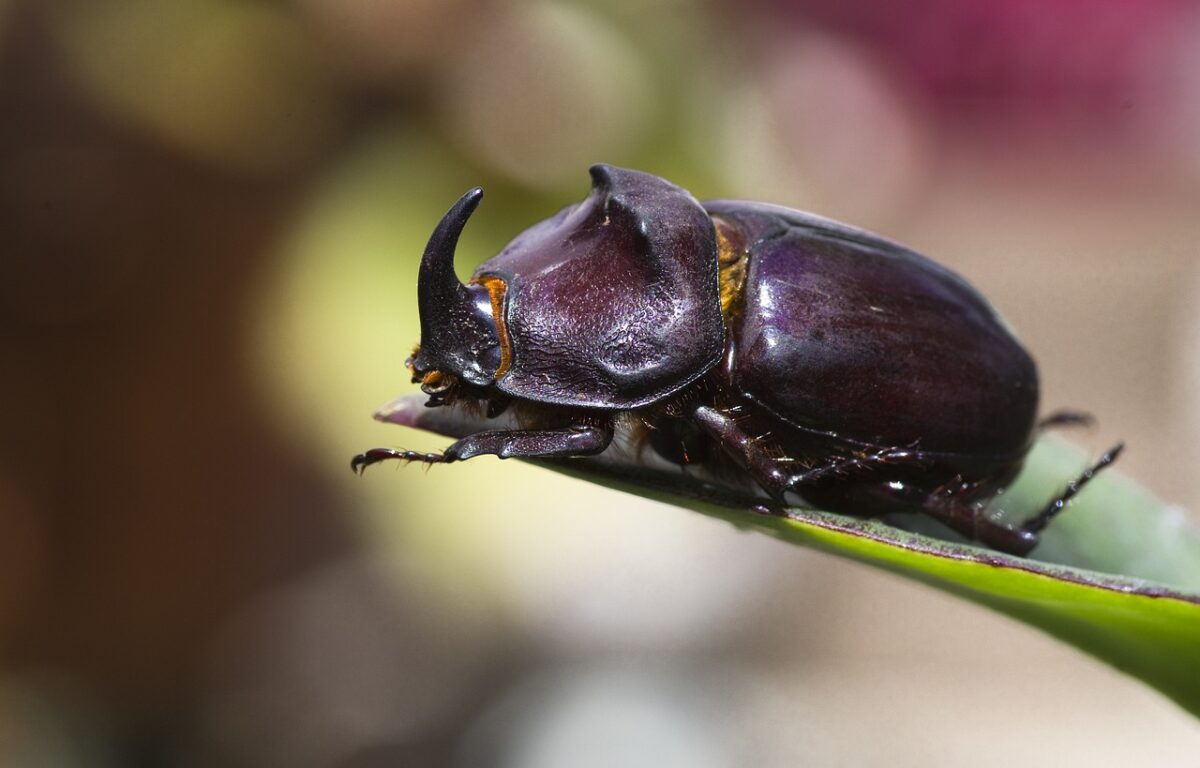
The Hercules Beetle is a fascinating creature with unique eating habits, particularly in its larval stage. As larvae, these beetles feed on decaying wood and other plant material. Consequently, they help to break down organic matter in their environment.
When they reach adulthood, Hercules Beetles consume fungi and fruits like bananas, though most of their diet consists of tree sap and nectar. Fruits are a particularly sought-after food for adult beetles who live in the rainforest, as it’s sometimes difficult to find trees with abundant juice or nectar.
How the Hercules Beetle Behaves In Its Natural Environment
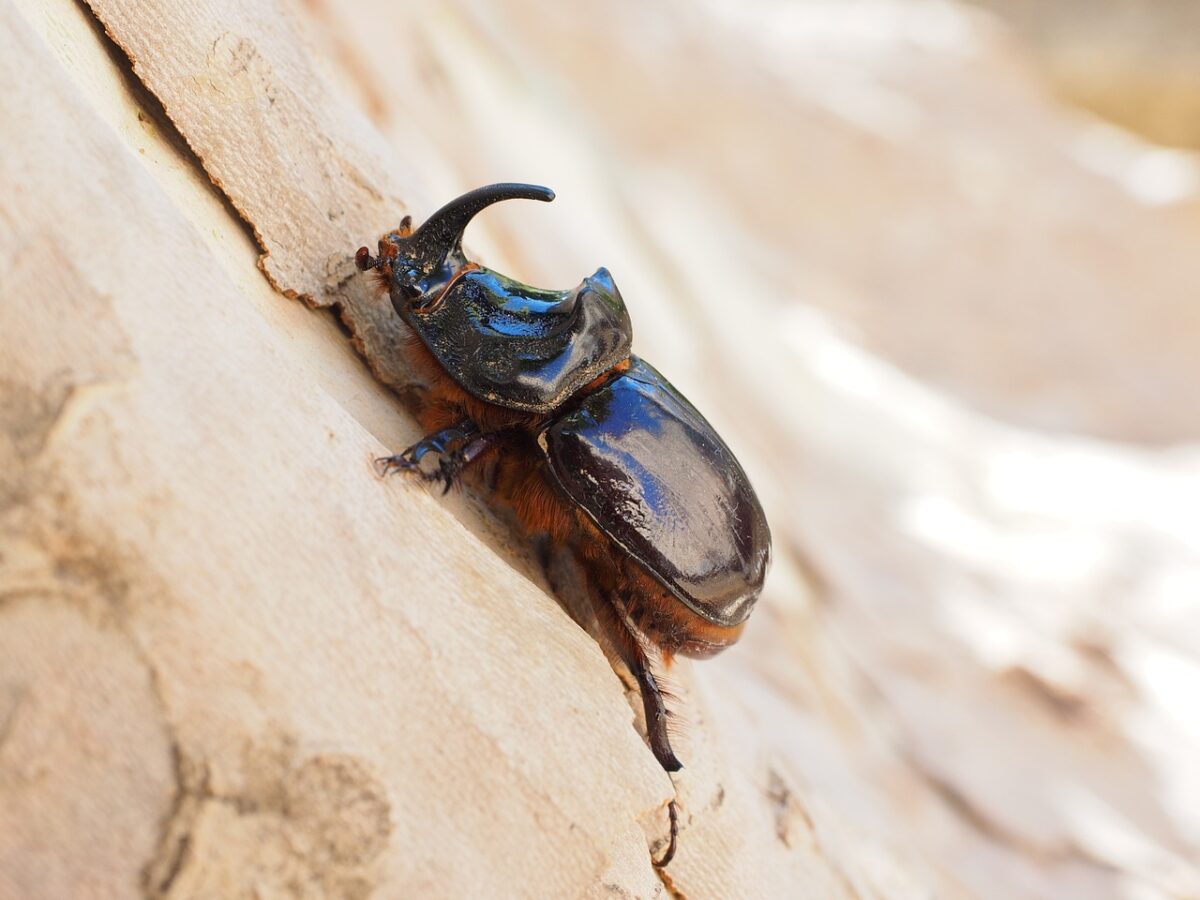
The Hercules Beetle is an impressive species in its natural environment seeing as it can carry items several times its weight. The males of the species have horn-like protrusions that make them look even more intimidating than they already are.
They also demonstrate a remarkable display of aggression when contesting resources or mates, using their horns to battle opponents in a show of strength.
Despite its intimidating appearance, the Hercules Beetle tends to remain harmless unless provoked, leaving humans very little to worry about when encountering one during outdoor activities.
Life Cycle of the Hercules Beetle
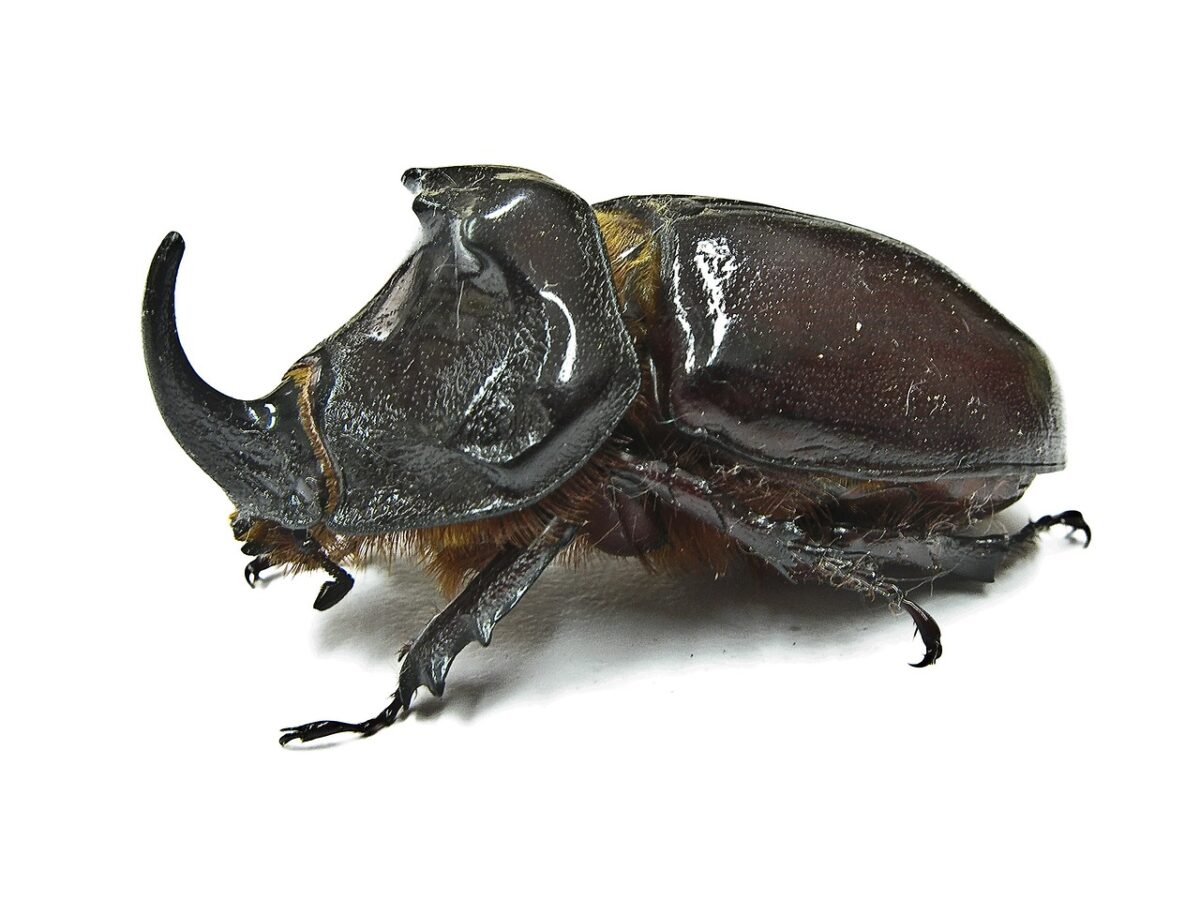
The Hercules Beetle is a fascinating insect known for its size and intricate horn-like structures. In this section, we will explore their life cycle, from a tiny egg to a magnificent adult.
#1 Egg Laying and Hatching
The life cycle of the Hercules Beetle begins when the female beetle lays her eggs in moist, decaying matter such as decomposing wood or leaves. The eggs hatch after a few weeks, and the larvae emerge.
#2 Larval Stage
As the larvae hatch, they feed on the nearby matter. The larvae go through successive stages of growth, during which they shed their exterior shells up to twelve times. This process can take several months, during which the larvae can grow up to four inches in length.
#3 Pupal Stage
After the larvae have completed their growth stages, they enter a pupal stage. The larvae transform into adults during this stage, lasting approximately two months. Pupae are protected in a cocoon, and their bodies undergo a dramatic transformation.
#4 Emergence of Adult Beetles
Once the pupal stage is complete, an adult beetle bursts out of the cocoon. Large horn-like pinchers are what differentiate the male and female beetles. In the wild, they can live for up to two years (including all the stages in their life cycle,) but in captivity, they typically only survive for 3-6 months.
Their life cycle is a fascinating and intricate process that allows these insects to grow from tiny eggs to magnificent adults. From tiny eggs to huge beetles, the Hercules Beetle’s life cycle is a remarkable journey. The final emergence of adult beetles with their intricate horn-like structures demonstrates how impressive these insects are.
Interesting Facts About the Hercules Beetle
The Hercules Beetle is an incredible creature renowned for its excellent strength, beautiful exoskeleton, and impressive lifespan. Now, let’s explore these characteristics in detail.
#1 Strength of the Hercules Beetle
The Hercules Beetles are named after the great hero from Greek mythology because they are so powerful. They can lift 850 times their body weight, making them one of the strongest animals in proportion to their size. This incredible strength comes from the pair of horns in front of their heads, which are used for protection and locking horns with rival male beetles.
#2 The Beauty of the Hercules Beetle
In addition to their strength, Hercules Beetles are also known for their unique and beautiful exoskeleton. Their exoskeletons can be either matte black, metallic green, or brown, which makes them quite stunning. The exoskeleton is covered with small craters that look like miniature volcanoes, adding to their unique appearance.
#3 Changes Color
When the weather turns especially humid, these beetles’ color transforms. In “normal” dry conditions, they have a lovely greenish and yellow exterior. This turns black when the air around them becomes humid, and the reverse happens when humidity levels drop.
Scientists have still not been able to establish why they go through this color change, but it has been theorized that it has something to do with predation or mating.
How To Care For a Hercules Beetle
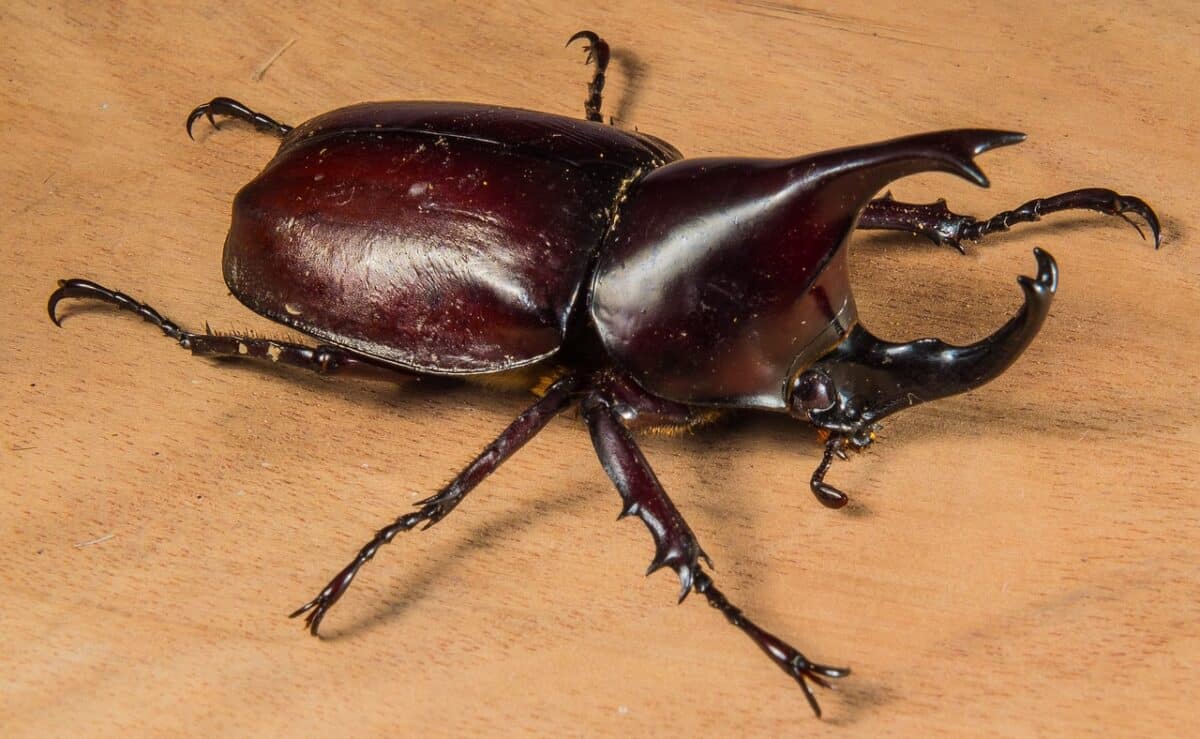
Looking after a Hercules Beetle is surprisingly easy and incredibly rewarding.
- They need an enclosed habitat, such as an adequately ventilated aquarium with approximately 4 inches of soil plus rainforest-inspired plants – both edible and non-edible varieties work, preferably a mixture.
- It’s essential to ensure their enclosure remains humid, so frequent misting will be necessary for the beetles’ overall health and happiness.
These impressive insects can show off their iconic colors with proper care regimes while reaching unique sizes and are perfectly manageable if you’re a first-time bug owner.
What Predators Prey On the Hercules Beetle?
The Hercules Beetle is found in Central and South America, where there is an abundance of natural predators.
- They are common prey of centipedes and tarantulas and stalk the forest floors throughout their range.
- Birds, especially toucans, sometimes feed on these giant beetles as well. Although adults can fly weakly for short periods to avoid danger, they remain an easy target of predators due to their size and slow wind speed.
- The larvae are also subject to predation – small lizards such as geckos frequently search out their burrows and have them for dinner.
Other insectivorous animals may also feed on the pupae, contributing to their naturally low populations.
How It Defends Itself From Danger
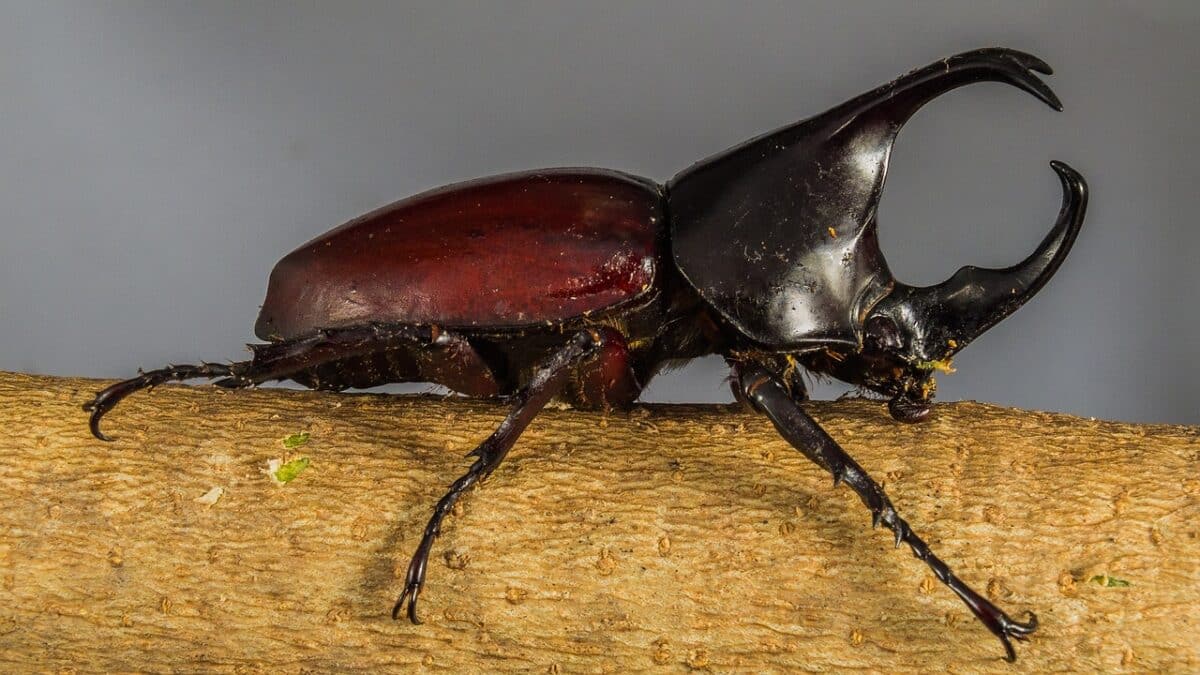
It has several defenses to protect itself from predators.
- Its sheer size – it can grow up to six inches long, and its hard exoskeleton provides armor-like protection.
- The Hercules Beetle defends itself using intimidating physical displays, such as extending its large horns and arching up its armored back.
- Evasive maneuvers are sometimes used as well. Some species of Hercules Beetles possess glands in their thorax, which secrete a foul-smelling fluid as a form of chemical self-defense against attackers.
Through these various methods, the Hercules Beetle can remain safe from predators most of the time.
Conclusion
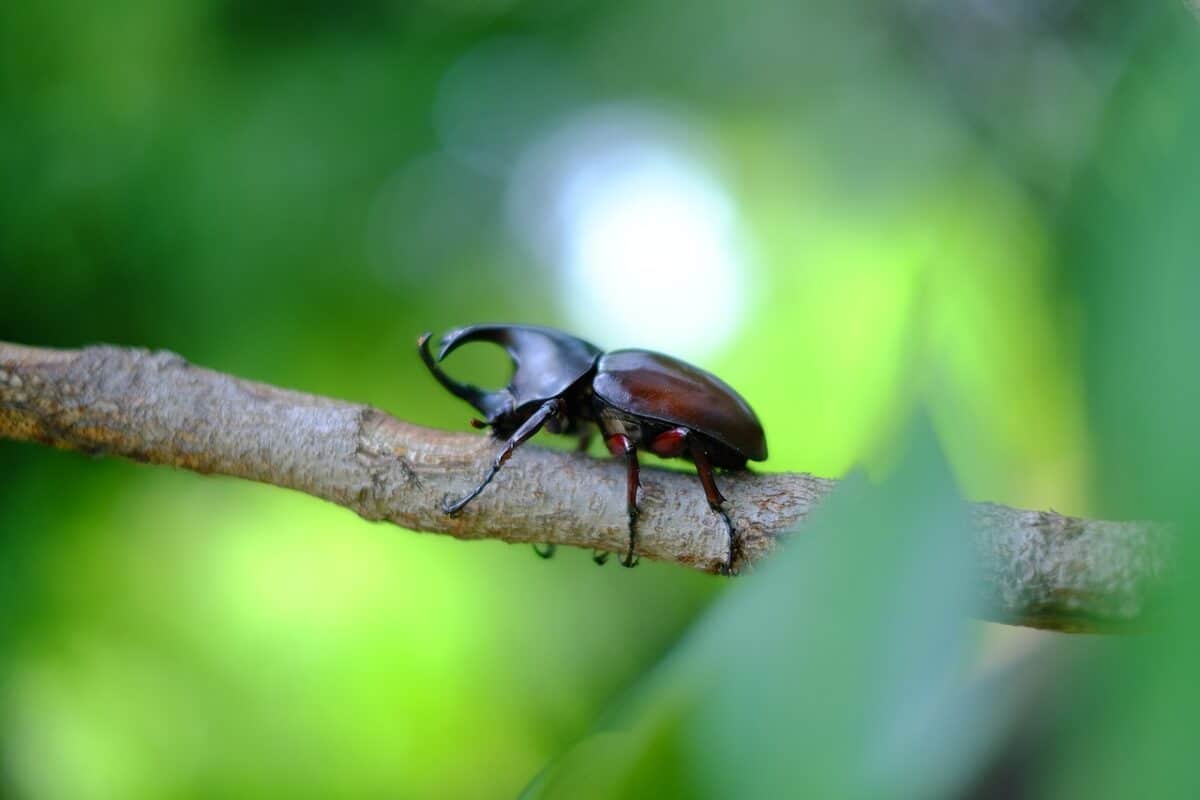
The Hercules Beetle certainly lives up to its namesake! From its physical makeup, strength, and durability – this species is truly one of a kind.
From its ability to fly despite its size to its strength to lift objects to 850 times its body weight – a feat unmatched by any other creature – the Hercules Beetle is unique. We can all take away an appreciation for this intriguing species and marvel at nature’s ability to surprise us every day.
It’s an incredible insight into how nature works and a testament to life’s fantastic adaptability on earth. All in all, The Hercules Beetle is just one example of how incredible the animal kingdom is!
Thank you for reading this article! To uncover more fascinating facts about the insects inhabiting our planet, read our post on the Red Wasp or Waterbugs.
- Chicago Cat Jumps From 5th Floor of Burning Building and Survives - April 22, 2024
- The Cruelest Contest in the World: Rattlesnake Round-Ups - April 21, 2024
- Rare Footage: Wild Fox and Pet Cat Play-Date - April 21, 2024

